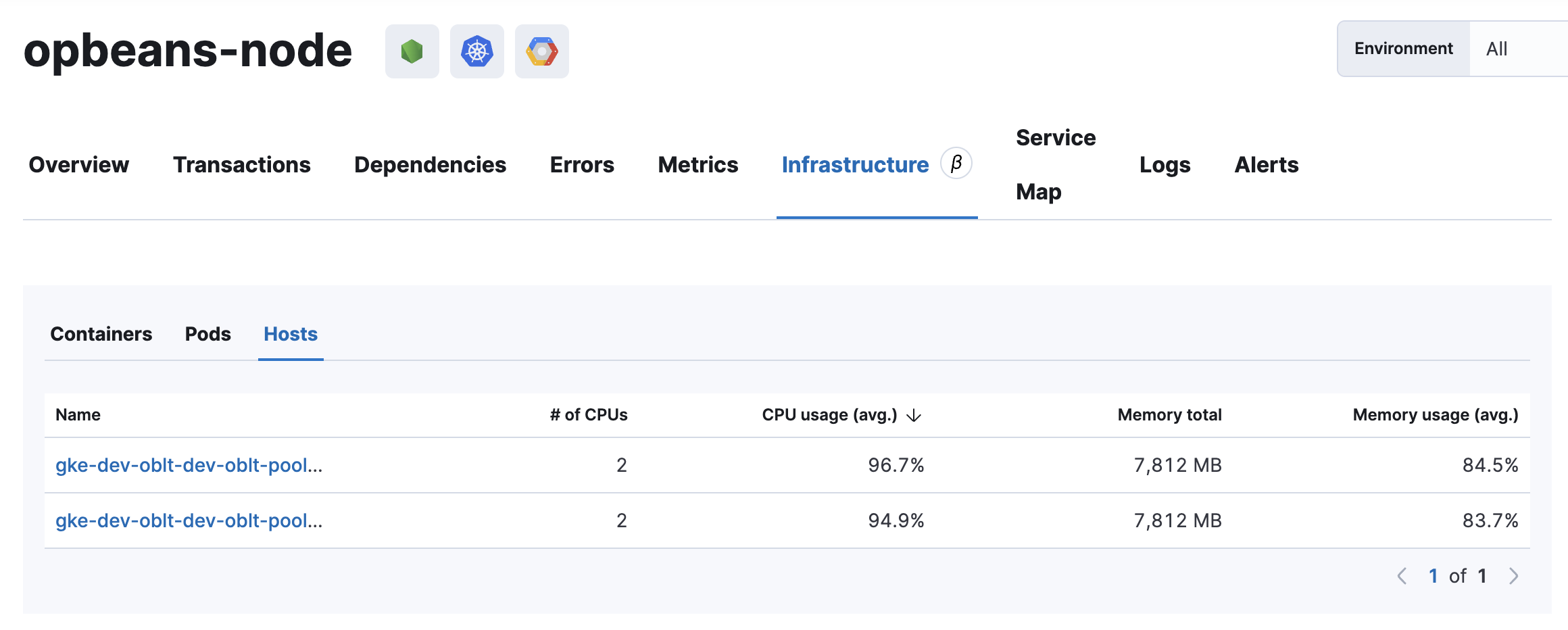IMPORTANT: No additional bug fixes or documentation updates
will be released for this version. For the latest information, see the
current release documentation.
Infrastructure
edit
IMPORTANT: This documentation is no longer updated. Refer to Elastic's version policy and the latest documentation.
Infrastructure
editThis functionality is in beta and is subject to change. The design and code is less mature than official GA features and is being provided as-is with no warranties. Beta features are not subject to the support SLA of official GA features.
The Infrastructure tab provides information about the containers, pods, and hosts that the selected service is linked to.

IT ops and software reliability engineers (SREs) can use this tab to quickly find a service’s underlying infrastructure resources when debugging a problem. Knowing what infrastructure is related to a service allows you to remediate issues by restarting, killing hanging instances, changing configuration, rolling back deployments, scaling up, scaling out, and so on.